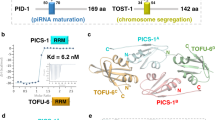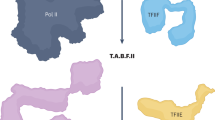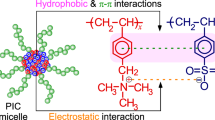Abstract
Polyion complex (PIC) formation is one of the most powerful techniques for obtaining molecular self-assemblies in aqueous media. The simple preparation process based on multiple electrostatic interactions is quite attractive for material syntheses, as well as biomedical applications. Therefore, it is desirable to control PIC architectures at the nanoscale in order to expand the scope of PIC materials. In this review article, recent progress on PIC vesicles (PICsomes) is summarized. PICsomes were first developed by my research group, and we recently succeeded in controlling the sizes and structural uniformity of the vesicles. Furthermore, the characteristic dynamic nature of PICs was revealed: PICs were found to exhibit reversible association/dissociation and structural transformation. We demonstrated that crosslinking the PIC layers of PICsomes is a powerful method for tuning properties such as stability and permeability. Finally, the potential utility of PICsomes for drug delivery nanocarriers was examined, and their future biomedical application is discussed.
Similar content being viewed by others
Log in or create a free account to read this content
Gain free access to this article, as well as selected content from this journal and more on nature.com
or
References
Petros, R. B. & DeSimone, J. M. Strategies in the design of nanoparticles for therapeutic applications. Nat. Rev. Drug Discovery 9, 615–627 (2010).
Hubbell, J. A., Thomas, S. N. & Swartz, M. A. Materials engineering for immunomodulation. Nature 462, 449–460 (2009).
Alexis, F., Pridgen, E., Molnar, L. K. & Farokhzad, O. C. Factors affecting the clearance and biodistribution of polymeric nanoparticles. Mol. Pharmaceutics 5, 505–515 (2008).
Cabral, H., Nishiyama, N. & Kataoka, K. Supramolecular nanodevices: from design validation to theranostic nanomedicine. Acc. Chem. Res. 44, 999–1008 (2011).
Peer, D., Karp, J. M., Hong, S., Farokhzad, O. C., Margalit, R. & Langer, R. Nanocarriers as an emerging platform for cancer therapy. Nat. Nanotechnol. 2, 751–760 (2007).
Ferrari, M. Cancer nanotechnology: opportunities and challenges. Nat. Rev. Cancer 5, 161–171 (2005).
Davis, M. E., Chen, Z. & Shin, D. Nanoparticle therapeutics: an emerging treatment modality for cancer. Nat. Rev. Drug Discovery 7, 771–782 (2008).
Matsumura, Y. & Maeda, H. A new concept for macromolecular therapeutics in cancer chemotherapy: mechanism of tumouritropic accumulation of proteins and the antitumour agent SMANCS. Cancer Res. 46, 6387–6392 (1986).
Kataoka, K., Harada, A. & Nagasaki, Y. Block copolymer micelles for drug delivery: design characterization and biological significance. Adv. Drug Delivery Rev. 47, 113–131 (2001).
Nishiyama, N. & Kataoka, K. Nanostructured devices based on block copolymer assemblies for drug delivery: designing structures for enhanced drug function. Adv. Polym. Sci. 193, 67–101 (2006).
Hartig, S. M., Greene, R. R., Dikov, M. M., Prokop, A. & Davidson, J. M. Multifunctional nanoparticulate polyelectrolyte complexes. Pharm. Res. 24, 2353–2369 (2007).
Miyata, K., Nishiyama, N. & Kataoka, K. Rational design of smart supramolecular assemblies for gene delivery: chemical challenges in the creation of artificial viruses. Chem. Soc. Rev. 41, 2562–2574 (2012).
Lee, Y. & Kataoka, K. Biosignal-sensitive polyion complex micelles for the delivery of biopharmaceuticals. Soft Matter 5, 3810–3817 (2009).
Donath, E., Sukhorukov, G. S. M., Caruso, F., Davis, S. A. & Möhwald, H. Novel hollow polymer shells by colloid-templated assembly of polyelectrolytes. Angew. Chem. Int. Ed. 37, 2201–2205 (1998).
Becker, A. L., Johnston, A. P. R. & Caruso, F. Layer-by-layer-assembled capsules and films for therapeutic delivery. Small 6, 1836–1852 (2010).
Koide, Y., Kishimura, A., Osada, K., Jang, W. -D., Yamasaki, Y. & Kataoka, K. Semipermeable Polymer vesicle (picsome) self-assembled in aqueous medium from a pair of oppositely charged block copolymers: physiologically stable micro-/nanocontainers of water-soluble macromolecules. J. Am. Chem. Soc. 128, 5988–5989 (2006).
Dong, W. -F., Kishimura, A., Anraku, Y., Chuanoi, S., Yamasaki, Y. & Kataoka, K. Monodispersed Polymeric Nanocapsules: spontaneous evolution and morphology transition from reducible hetero-PEG picmicelles by controlled degradation. J. Am. Chem. Soc. 131, 3804–3805 (2009).
Anraku, Y., Kishimura, A., Oba, M., Yamasaki, Y. & Kataoka, K. spontaneous formation of nanosized unilamellar polyion complex vesicles with tunable size and properties. J. Am. Chem. Soc. 132, 1631–1636 (2010).
Anraku, Y., Kishimura, A., Yamasaki, Y. & Kataoka, K. Living unimodal growth of polyion complex vesicles via two-dimensional supramolecular polymerization. J. Am. Chem. Soc. 135, 1423–1429 (2013).
Kishimura, A., Koide, A., Osada, K., Yamasaki, Y. & Kataoka, K. Self-assembled encapsulation of myoglobin into pegylated polyion complex vesicles (picsomes) made from a pair of oppositely charged block ionomers: a physiologically available oxygen carrier. Angew. Chem. Int. Ed 46, 6085–6088 (2007).
Harada, A. & Kataoka, K. Chain length recognition: core-shell supramolecular assembly from oppositely charged block copolymers. Science 283, 65–67 (1999).
Mauser, T., Déjugnat, C. & Sukhorukov, G. B. Reversible pH-dependent properties of multilayer microcapusles made of weak polyelectrolytes. Macromol. Rapid Commun. 25, 1781–1785 (2004).
Antipov, A. A. & Sukhorukov, G. B. Polyelectrolyte multilayer capsules as vehicles with tunable permeability. Adv. Colloid Interface Sci. 111, 49–61 (2004).
Kishimura, A., Liamsuwan, S., Matsuda, H., Dong, W.-F., Osada, K., Yamasaki, Y. & Kataoka, K. pH-dependent permeability change and reversible structural transition of PEGylated polyion complex vesicles (PICsomes) in aqueous media. Soft Matter 5, 529–532 (2009).
Oana, H., Kishimura, A., Yonehara, K., Yamasaki, Y., Washizu, M. & Kataoka, K. Spontaneous formation of giant unilamellar vesicles from microdroplets of polyion complex via thermally induced phase separation. Angew. Chem. Int. Ed. 48, 4613–4616 (2009).
Anraku, Y., Kishimura, A., Kobayashi, A., Oba, M. & Kataoka, K. Size-controlled long-circulating PICsome as ruler to measure critical cut-off disposition size into normal and tumor tissues. Chem. Commun. 47, 6054–6056 (2011).
Bertrand, N. & Leroux, J. -C. The journey of a drug-carrier in the body: an anatomo-physiological perspective. J. Control. Release 161, 152–163 (2012).
Kokuryo, D., Anraku, Y., Kishimura, A., Tanaka, S., Kano, M. R., Kershaw, J., Nishiyama, N., Saga, T., Aoki, I. & Kataoka, K. SPIO-PICsomes: development of a highly sensitive and stealth-capable MRI nano-agent for tumor detection using SPIO-loaded unilamellar polyion complex vesicles (PICsomes). J. Controlled Release. doi:10.1016/j.jconrel.2013.03.016 (in the press).
Acknowledgements
This research was supported in part by a Grant-in-Aid for Scientific Research (No. 23106705, 23685037) from the Ministry of Education, Culture, Sports, Science and Technology (MEXT) of Japan. I am deeply indebted to Professor Kazunori Kataoka (The University of Tokyo) for his continuous encouragement and discussion throughout this work. Most of this study was conducted by our students and coworkers. I am grateful to many of my coworkers, particularly Drs Hidehiro Oana and Yasutaka Anraku (The University of Tokyo), and my students.
Author information
Authors and Affiliations
Corresponding author
Rights and permissions
About this article
Cite this article
Kishimura, A. Development of polyion complex vesicles (PICsomes) from block copolymers for biomedical applications. Polym J 45, 892–897 (2013). https://doi.org/10.1038/pj.2013.33
Received:
Revised:
Accepted:
Published:
Issue date:
DOI: https://doi.org/10.1038/pj.2013.33
Keywords
This article is cited by
-
Bioinspired photocatalytic systems towards compartmentalized artificial photosynthesis
Communications Chemistry (2023)
-
Microanalysis using surface modification and biphasic droplets
Polymer Journal (2018)
-
Phenolic film engineering for template-mediated microcapsule preparation
Polymer Journal (2014)



